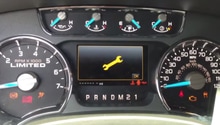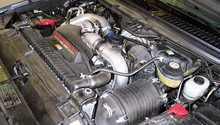Ford F-250: Why is My Transmission Overheating?
Transmissions can overheat much the same way engines do. Thankfully, the root causes that might make your F-250's transmission might overheat are pretty minimal. Find out what to do if your truck's gears are running hot below.
This article applies to the Ford Super Duty (2004-2014)
If your transmission is showing symptoms of overheating, you'll want to limit your driving to a bare minimum until it's properly fixed, otherwise too much damage will occur and you'll end up destroying the transmission. Symptoms of an overheating transmission will include brown or black transmission fluid that has a burnt smell. You should always check your fluid regularly about every 10-15k miles as well as both before and after the transmission will be under extreme stress such as towing or hauling extremely heavy loads for long distances.
Tools Needed
- Backflushing kit
- Water Hose
- Transmission fluid
Step 1 - Inspect your fluid
Transmission fluid is key to keeping the transmission from overheating. Not only does it lubricate the gears, but it cools them. The dipstick is normally located close to the firewall on the passenger side. To properly check the levels, the transmission will need to be fully warmed. Driving an addition 1 to 2 miles after the engine has warmed up should be enough to warm up the transmission, too. If you live in a cooler climate, you may need to drive a little longer.
If the fluid is too high, you'll need to drain some out. While this won't normally cause overheating issues, it can lead to other problems. If it is too low, you'll need to top it off with the proper type of fluid. Low fluid can definitely be a cause of the overheating.

Figure 1. Your transmission fluid level should be in the cold range if you're checking while the truck is cold. 
Figure 2. Your transmission fluid level should be in the hot range after the engine has warmed up.
If the fluid is foamy and thick, it means there's water or engine coolant in your transmission fluid and you'll need to rebuild the whole thing. This is can happen if the radiator springs a pinhole leak between the transmission fluid and engine coolant partitions.
If the fluid is black, brown, or burnt smelling, you'll need to have the fluid replaced. This is usually the case if the fluid has run low. If the fluid was normal level yet burnt or dark colored, you can stop diagnosis at this point and simply replace it. You can then check the fluid after a few months. If it returns to a burnt, dark state, you have another problem you'll need to diagnose. If the fluid was low, go to Step 2, otherwise go to Step 3.
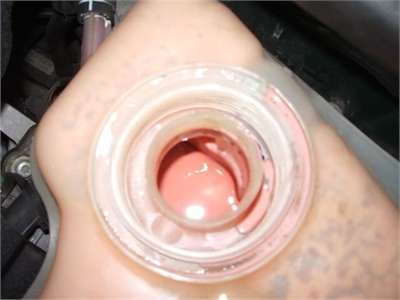
Figure 3. This is what transmission fluid and coolant look like when they mix. 
Figure 4. Transmission Fluid Color Comparison
Step 2 - Inspect for leaks and damage
Check the transmission as well as any transmission cooler lines for leaks. Transmission fluid doesn't "burn off" easily like engine coolant does. That leaves two main causes behind a transmission with low fluid: it was either under-filled or there was a leak.
- Before doing the leak check, inspect all the lines, fittings, the cooler, etc. for signs of corrosion or damage. Not only could these be leak points, but they could also be points where trash can get into lines and clog them up. A damaged transmission cooler will also not cool properly as it can limit fluid flow through it.
- Let the transmission warm up and keep the truck running. This will ensure that fluid is moving through the lines.
- Begin by check the transmission pan and valve body for any leaks.
- From there, move onto the transmission cooler lines and trace them all the way up to the radiator. Just remember, the leak may be small so a paper towel can come in handy. You can drag it along the lines and if it you hit something wet, you've probably found a leak.
If any leaks are found, you'll need to replace that fitting/line/gasket/etc.

4r7xx Transmission Cooler Lines 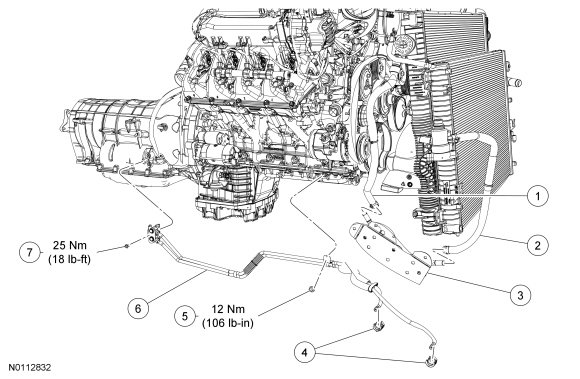
6R140 Torqueshift Transmission Cooler Lines 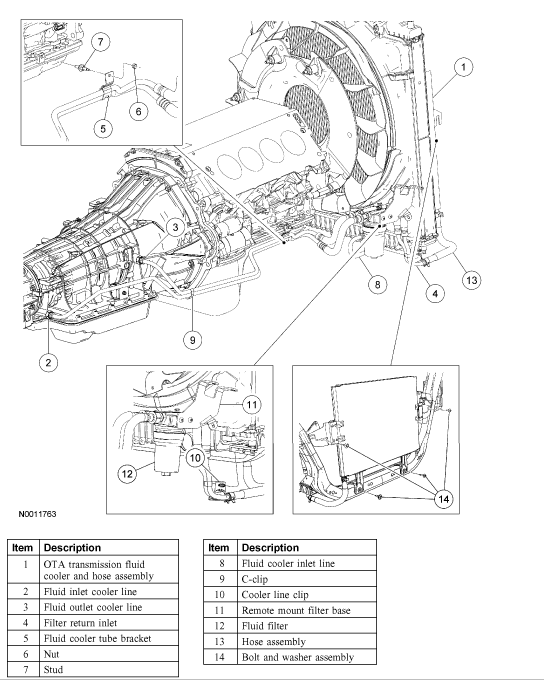
Torqueshift 5110W Transmission Cooler Lines
You might potentially have low transmission fluid. A transmission that is leaking fluid might not be doing it while sitting still, meaning it might not be leaving pink puddles on your drive way. Leaks can often happen after impact damage as transmission coolant lines are relatively fragile
(Related Article: What Causes Transmission Leaks? - Ford-trucks.com)
Step 3 - Backflush transmission cooler and lines
A backflush forces fluid through the lines of your coolant system in reverse too free any debris. Any clogs in the cooling system will be a definite cause of overheating. I highly recommend leaving this to a professional if you're not comfortable with taking your transmission's "life" into your own hands.
- Remove the transmission thermostat.
- Depending on your backflushing kit of choice, it will attach differently so follow the included instructions for attaching it.
- Once the backflushing kit is attached, open the transmission cooler drain port and allow the fluid to drain out.
- Turn on your water hose to allow water to begin flowing through the lines.
- With the truck idling, allow it to flush for around 5-7 minutes, you'll know it's done when the water comes out clear.
- Once done, you can turn off the truck and you'll need to detach the flushing system.
- This is the most important step, You now need to get all the leftover water out. If you don't, water in the transmission fluid can seriously damage the transmission. You'll need to attach your air compressor and blow out all the lines/cooler/etc. If your unsure if you got it all, there's no harm in letting it sit overnight to allow evaporation to hopefully get the rest for you.
- You can now refill the transmission fluid.
Your transmission fluid cooler or coolant lines may be clogged. Since the transmission is a closed system, this will likely happen if your transmission is having some kind of mechanical failure. Metal shavings and broken parts can accumulate in the piping, causing a clog.
(Related Article: How to Change Transmission Fluid - Ford-trucks.com)
Related Discussions
- Milky Transmission Fluid - F150forum.com
- How to Find the Transmission Cooler - F150online.com
- How to Backflush a Coolant System - DoitYourself.com
- Ford Transmission Backflush Service Intervals - F150online.com
- Symptoms of Overheating - TransmissionRepairDallasTX.com

